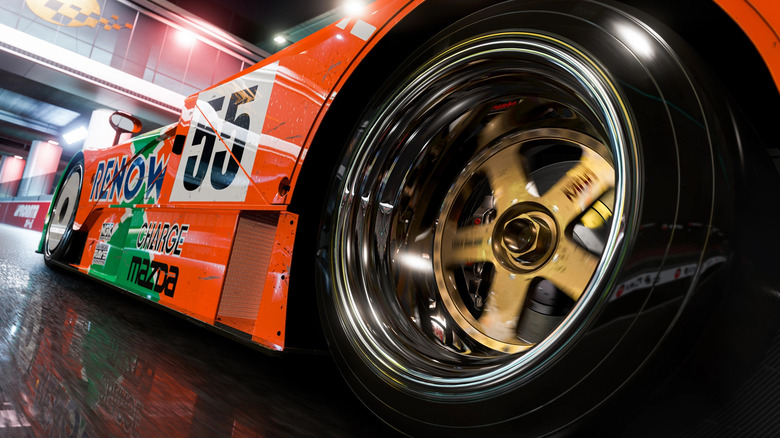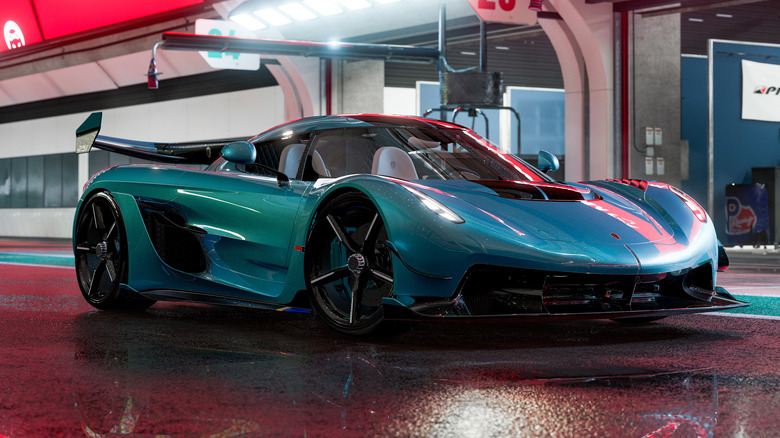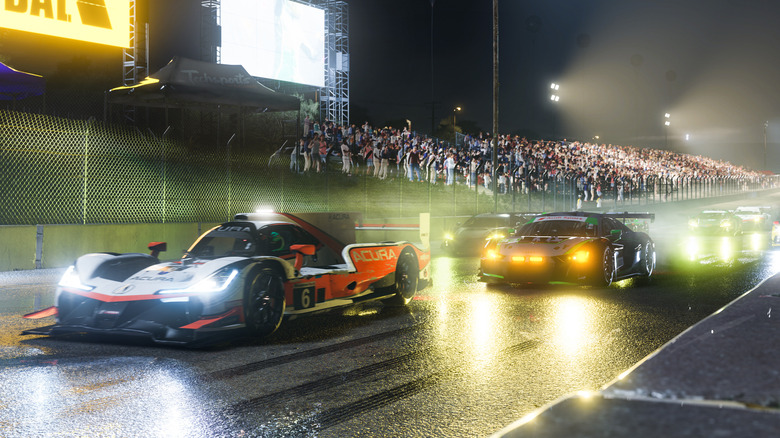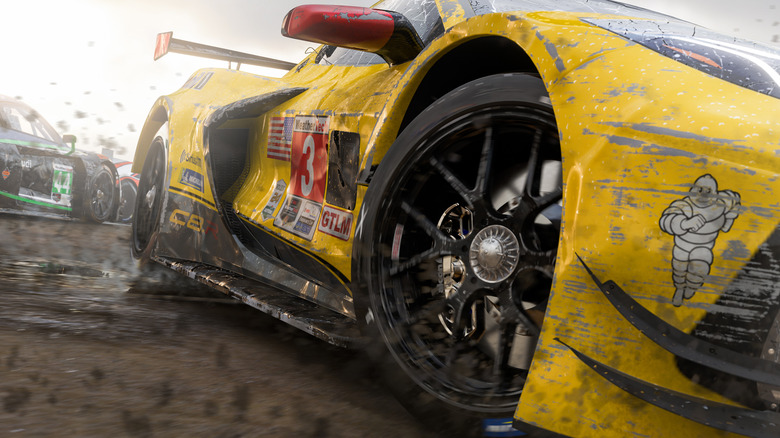Forza Motorsport Features That Were Never Possible Before
Announced back in 2020, "Forza Motorsport" is the next entry in Microsoft's acclaimed simulation racing series. News on the game has been fairly nonexistent since its reveal, but now, thanks to the recent Xbox and Bethesda Games Showcase, fans were rewarded with not only a new trailer, but also some in-depth developer commentary and the first look at actual gameplay.
Surely, as the game's release date of sometime in 2023 speeds closer and closer, fans are hoping for the equally enthusiastic reviews that "Forza Horizon 5" received back in 2021 rather than a repeat of the unfortunate record set by "Gran Turismo 7" earlier in 2022. Only time will tell how both critics and audiences will respond to "Forza Motorsport," but based on all that was revealed during the Xbox showcase, it's shaping up to be a stunning experience. According to the developers at Turn 10 Studios, this new entry in the series is "the most technically advanced racing game ever made."
Ray tracing is king
Ray tracing was a popular buzzword back 2020 before the release of the PlayStation 5 and Xbox Series X and S consoles, and it describes a lifelike way of rendering light in games — a technique previously impossible for consoles. While a handful of games on both PlayStation and Xbox have had ray tracing since the start of this console generation, it hasn't been part of every major release. That could be changing soon as we start to play games that have been made from the ground up for these more powerful consoles.
"Forza Motorsport" has given us a fresh glimpse of what this next-gen ray tracing looks like in motion and it is a visual treat. Racing games with shiny cars have always been a spectacular way to showcase the graphical power of a game engine, and "Forza Motorsport" is no different. According to the game's website, "...advanced materials and shaders paired with ray tracing bring out incredible detail in the gold heat wrap, anodized aluminum, and carbon fiber. Ray tracing especially shines on engine bays with their complex self-reflection." While this is referring primarily to the way that ray tracing enhances the visual fidelity of engines, the gameplay showcase highlighted a particularly impressive display of ray tracing-powered reflections.
Blinded by the lights
Ray tracing is all about lighting, of course, and using what the developers call "forward+ lighting and physically based lights" will purportedly increase the depth of realism in the game. However, the lighting in "Forza Motorsport" is looking to do a little bit more than simply aiming for a realistic look. According to the developers, it will actually affect the way you race.
Most of this comes from the brand new "dynamic time of day system." Further explained on the website, this system's lighting, which transforms throughout the in-game day, "alters ambient temperatures." As a result, the tracks on which you race will have fluctuating surface temperatures. Your car's grip on the track will change based on not only these temperature conditions, but the game's additional weather systems as well. This level of realism is a new addition to the "Forza" series and will affect player strategy and playstyle.
Realism through physics and photogrammetry
Crashing is a fairly regular occurrence when coming to grips with a new simulation racing game, and "Forza Motorsport" looks like it will make the process as enjoyable as possible. Continuing to add on to their efforts in bringing as much realism to the game as possible, Forza's website says, "In Forza Motorsport, car damage is reproduced down to the individual scratches on the bodywork. There are all-new simulation details in the directionality of damage, how the paint peels away at exposed and raised edges, in the wheel abrasions, and in the dirt build-up."
As painful as it can be to see your gorgeous car beaten and bruised, watching the damage unfold in realistic ways should prove to be viscerally satisfying. How is it that the effects of simulated crashes can be so carefully represented in-game? Developers say it's due to a "48 times improvement in fidelity" to the game's physics. That, coupled with advanced techniques like "photogrammetry and 3D material scans," will likely lead to some incredibly detailed racing.
The game's 2023 launch date may cause fans to feel like it's far away, but if it delivers an experience that's as gorgeous and immersive as advertised, it will definitely be worth the wait.




